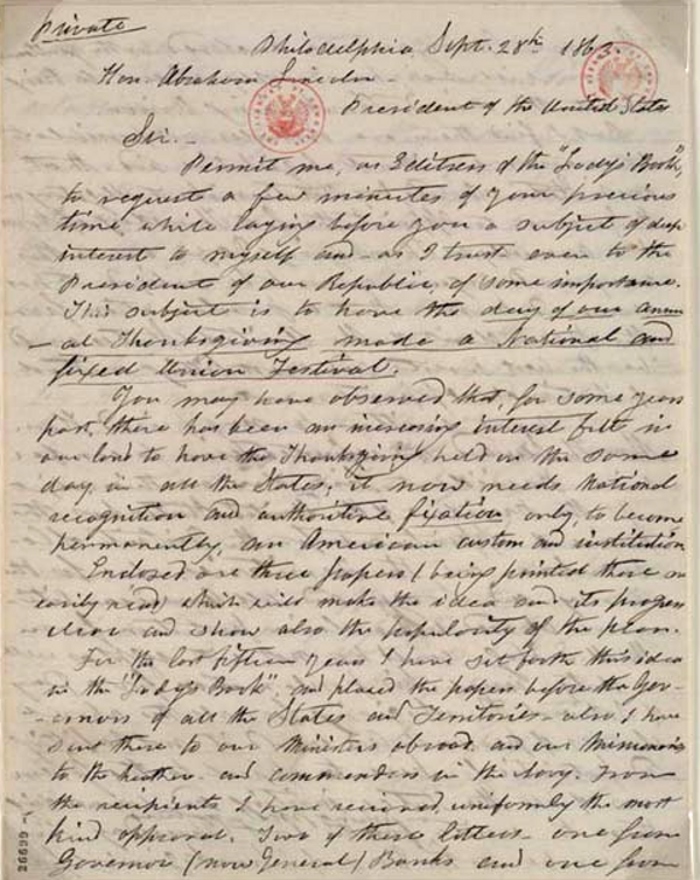You've probably heard the nursery rhyme and perhaps even sung the song:
Mary had a little lamb,
Its fleece was white as snow,
And every where that Mary went
The lamb was sure to go;
He followed her to school one day—
That was against the rule,
It made the children laugh and play,
To see a lamb at school.
Did you know it is based on truth?
In May of 1830, a woman by the name of Sarah Josepha Hale published the three verses, "Mary Had a Little Lamb," in her collection, Poems for Our Children.
 |
| Sarah Josepha Hale, 1831, by James Reid Lambdin. After her husband died, Hale wore black for the rest of her life. Public Domain. |
Mrs. Hale had been publishing poetry and fiction since 1823, a year after her husband David's untimely death. With five small children to support, the former schoolteacher took to writing. Her late husband's Freemasons lodge supported her in her fist publication, a poetry collection called The Genius of Oblivion.
After the publication of her novel Northwood: Life North and South in 1827, making her one of the first female novelists in America as well as one of the first authors to write about slavery. After this publication, she was invited to move to Boston to become editor of Ladies' Magazine.
It was during this period when she wrote "Mary's Lamb" (the original title), drawing on her experience teaching school before she married. At a small school near her home of Newport, New Hampshire, Hale was astonished one morning when her student, Mary, came to school followed by her pet lamb.
 |
| 1902 Mother Goose by William Wallace Denslow. Public Domain. |
Hale couldn't allow the distracting lamb to stay in class, so Mary had to place it outside until school was dismissed for the day. When Mary came outside to collect it, it ran to her. Hale admired Mary's devotion and care for her pet.
 |
| The final two verses in Mother Goose, 1902. Public Domain. |
A few years later, Mason Lowell turned the verses into the song so many of us have sung over the years.
Meanwhile, Hale continued on with her work. When Ladies' Magazine was purchased by Godey's Ladies' Book, Hale was requested to stay on as editor, a position she held for forty years until she was 89 years old.
Throughout her career, she continued with other projects, as well, and one of the things she was most passionate about was ensuring Thanksgiving became a national holiday. She sent letters to Presidents Taylor, Fillmore, Pierce, and Buchanan on the topic, to no avail, but her letter to President Lincoln helped him decide to support legislation establishing it as a holiday in 1863.
 |
| Hale's letter to President Lincoln urging him to make Thanksgiving a national holiday, 1863. Library of Congress, Public Domain. |
No one ever forgot "Mary's Lamb" and in 1877, the year of her retirement, Thomas Edison chose Hale's poem to be the very first thing he ever recorded on his new invention, the phonograph.
Hale died in 1879, but is remembered for her role as a proponent of women, a historic preservationist, and the woman who persuaded President Lincoln to make Thanksgiving a national holiday.
***
Susanne Dietze is the award-winning author of stories with Timeless Heart, including The Blizzard Bride from Barbour Publishing. You can learn more about her on her website, www.susannedietze.com.



I never knew this!!! My hometown isn't far from Newport! I tell you, the things I learn here. Thanks for posting.
ReplyDeleteWow, that's neat that you live so close to Newport!
DeleteI'm so glad you came by and said hi! Have a great day.
Wow, what an interesting lady. She probably never dreamed her little children's poem would be sung and recited for centuries to come. That song was the first thing I learned to bang out on a piano. Wonderful information, thank you.
ReplyDeleteHi Marlene! Isn't it a fun story? I'm sure she had no idea the lasting legacy her poem would have.
DeleteI hope you're having a wonderful day.
This is delightful, Susie. I never knew there were 2 other verses as we only always sang the first two. Thanks so much for sharing the life of this woman who inspired so many children to laugh and sing.
ReplyDeleteHi Anita! I'm so glad you enjoyed the post! I never sang the final verse of the song, so it was fun to learn about that.
DeleteHope your day is going well.